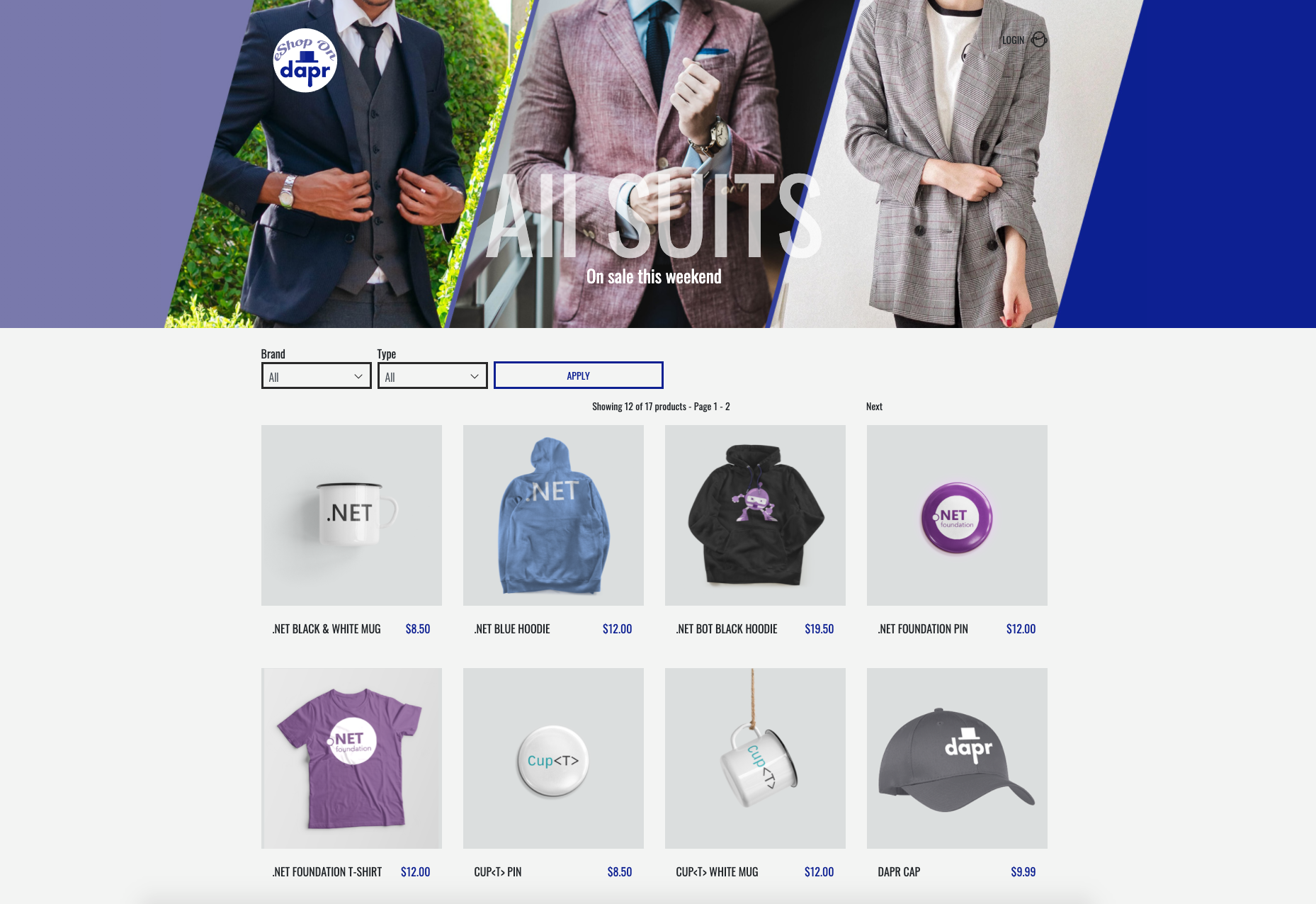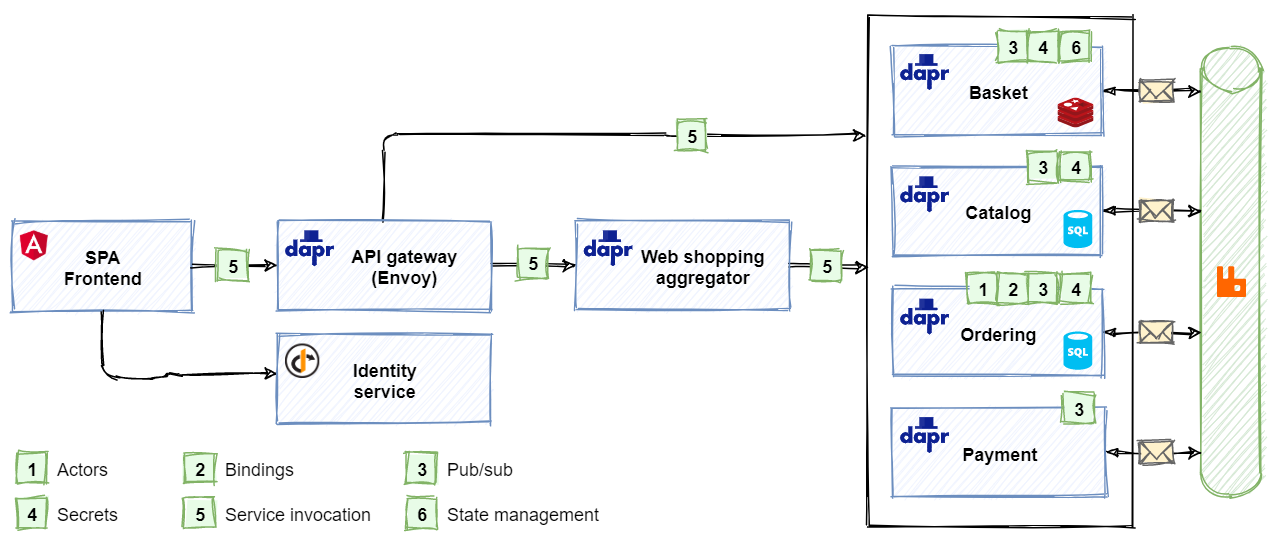A sample .NET Core distributed application based on eShopOnContainers, powered by Dapr.
The accompanying e-book Dapr for .NET developers uses the sample code in this repository to demonstrate Dapr features and benefits. You can read the online version and download the PDF for free.
Dapr enables developers using any language or framework to easily write microservices. It addresses many of the challenges found that come along with distributed applications, such as:
- How can distributed services discover each other and communicate synchronously?
- How can they implement asynchronous messaging?
- How can they maintain contextual information across a transaction?
- How can they become resilient to failure?
- How can they scale to meet fluctuating demand?
- How are they monitored and observed?
eShopOnDapr evolves (or, Daprizes, if you will) the earlier eShopOnContainers application by integrating Dapr building blocks and components:
As focus of the eShopOnDapr reference application is on Dapr, the original application has been updated. The updated architecture consists of:
-
A Single Page Application frontend written in the popular Angular SPA framework. It sends user requests to an API gateway microservice.
-
The API gateway abstracts the backend core microservices from the frontend client. It's implemented using Envoy, a high performant, open-source service proxy. Envoy routes incoming requests to various backend microservices. Most requests are simple CRUD operations (for example, get the list of brands from the catalog) and handled by a direct call to a backend microservice.
-
Other requests are logically more complex and require multiple microservices to work together. For these cases, eShopOnDapr implements an aggregator microservice that orchestrates a workflow across the microservices needed to complete the operation.
-
The set of core backend microservices includes functionality required for an eCommerce store. Each is self-contained and independent of the others. Following widely accepted domain decomposing patterns, each microservice isolates a specific business capability:
- The basket service manages the customer's shopping basket experience.
- The catalog service manages product items available for sale.
- The identity service manages authentication and identity.
- The ordering service handles all aspects of placing and managing orders.
- The payment service transacts the customer's payment.
-
Finally, the event bus enables asynchronous publish/subscribe messaging across microservices. Developers can plug in any Dapr-supported message broker.
eShopOnDapr runs in containers and requires Docker to run. There are various ways to start the application:
- Run eShopOnDapr from the CLI
- Run eShopOnDapr from Visual Studio (best F5 debugging experience)
- Run eShopOnDapr from Visual Studio Code (allows you to debug individual containers))
- Run eShopOnDapr in Kubernetes
Note that it will take a little while to start all containers. eShopOnDapr includes a health UI that you can use to see if the containers are ready. You can access it at http://localhost:5107/hc-ui.
When all microservices are healthy, you can navigate to http://localhost:5104 to view the eShopOnDapr UI.
Model photos by Laura Chouette, Heng Films & Enmanuel betances Santos on Unsplash.

